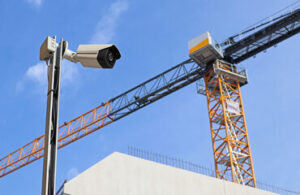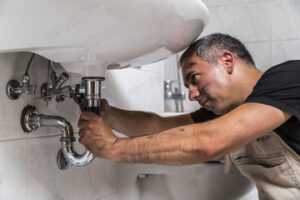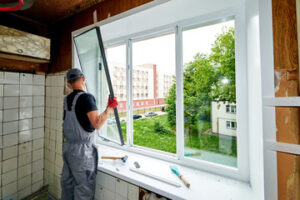Baltimore Security Companies provide a visible presence to deter potential crime and unruly behavior. They also serve as a liaison between residents and law enforcement officials, promoting cooperation and trust.
A security guard’s duties include:
- Conducting regular patrols.
- Scrutinizing surveillance equipment like cameras and systems.
- Providing detailed accounts of suspicious activities in emergency situations.

A well-crafted security guard job description will ensure these important responsibilities are clearly outlined for candidates.
Detecting Suspicious Activity
The ability to detect suspicious activity is a key skill for security guards. They are trained to be observant and look out for anything that is out of the ordinary, such as people who stay in one place for an extended amount of time or act unusually around others. Guards often report these issues, which can be useful to law enforcement if the situation escalates.
Security guards also patrol a property to prevent vandalism, theft, and other crimes. They may check alarms and surveillance systems to ensure they function properly and look after important areas. They also monitor and enforce rules, such as no smoking or loitering. In the event of a disturbance, they will take action to resolve the issue and contact emergency services if necessary.
During patrols, security guards inspect fencing, gates, building exteriors, and other key access points for signs of tampering or intrusion. They can also conduct routine inspections of cameras, alarms, and access control systems to ensure that they are working correctly. This allows them to quickly identify and report any issues to management or the police if necessary.
Patrolling is also an effective deterrent, as it makes employees and visitors feel that the premises are protected. In addition, security guards can provide initial assessments of emergencies upon arrival on site, which is particularly helpful when it comes to ensuring the safety of all involved parties.
A security guard can also be a valuable asset to the workplace by keeping an eye on sensitive equipment, such as servers or data centers, and ensuring that no one is unauthorized to enter. They can also help to reduce the impact of cyber threats by spotting anomalies in network activity, such as sudden changes in login patterns or a spike in malware attacks. These reports can then be used to inform prevention tactics and enhance the overall security of a business.
Enforcing Rules
Security guards are responsible for enforcing the rules and regulations set by their clients. These rules may include safety protocols, access control procedures or specific guidelines related to the property they are protecting. Guards can also detain individuals who violate these rules until law enforcement arrives.
Enforcing the rules is a critical component of security guard work as it helps prevent crime and ensures that the company’s assets are safe. However, security guards must be careful not to overstep their boundaries and make unnecessary arrests or other types of contact with people on the property. Using excessive force could result in legal consequences for both the guard and the business.
In addition to following the rules set by their clients, security guards are often required to follow laws and regulations set by their employer. This includes policies on the use of force, detainment and more. It is important for a security guard to have a thorough understanding of these policies so that they can be as effective as possible in their duties.
For example, a security guard must have clear, verbal consent before conducting any pat-downs or searches of persons or their belongings. This includes backpacks, purses, briefcases and clothing. Likewise, security personnel cannot obtain search warrants unless they have probable cause to believe that a criminal act is occurring or is about to occur. They are also only authorized to enforce laws within the designated area that they are protecting.
Similarly, a security guard cannot hold a person indefinitely unless they have reasonable suspicion that the individual is involved in criminal activity. This means that a security guard can only detain an individual until law enforcement arrives to perform a citizen’s arrest or take over the investigation. Security guards must have a comprehensive detainment policy that outlines the maximum amount of time that they can hold suspects as well as any exceptions.
Having a solid security guard management plan is essential for any business. By setting clear expectations for security guards, you can help them be successful and minimize liabilities on your behalf.
Responding to Emergency Situations
During emergency situations, security guards must take action quickly and efficiently. They must assess the situation and determine whether anyone is in danger and what their next steps should be. This could include calling the police or fire department, removing unauthorized persons from the premises and alerting people to evacuate the building.
They also monitor and observe for any signs of theft, damage to property or equipment, or unusual occurrences. If they see an unsafe situation, such as an electrical fire or a chemical spill that threatens others, they must quickly and accurately report this to management.
Security guards are often trained to work in a variety of environments. This includes retail, healthcare, residential and education settings. They may be armed or unarmed and work for private companies or government agencies. Those employed by the government may carry weapons and are called on to provide law enforcement services.
Guards in these environments often have specialized training to deal with specific issues, such as customer service, communication techniques, first aid and CPR, firearms use, and patrol strategies. They also receive ongoing training from their employers.
In addition to their initial educational and certification requirements, most states require all security guards to complete on-the-job training with a mentor. This provides them with hands-on experience and teaches them the skills they need to do their job.
The final piece of the puzzle is completing the required training to become an armed or unarmed security guard. This is usually a long process that requires several courses and exams to complete. Some of these courses can be as lengthy as two years.
The security industry is competitive. It’s important for people who are considering becoming security guards to choose the right company for them. This means determining whether a security guard or officer role is best for them and choosing a program that meets their educational and training needs. Regardless of their choice, people in this field are usually highly motivated to succeed. This is reflected in their high levels of work ethic and commitment to their jobs.
Reporting Incidents
The process of reporting incidents is a fundamental aspect of a security guard’s duties. Incident reports provide a written account of security breaches and can be used for legal proceedings, insurance claims, or for analyzing and improving security protocols. Precise documentation ensures that all details of an incident are captured accurately, reducing the risk of misinterpretation or mishandling.
An effective incident report should begin with a clear description of what happened and a time stamp. Then, describe any witnesses or suspects and include any physical evidence. The report should then list the actions taken and any follow-up steps. It is important to complete a report as soon as possible after an incident, so that the details are still fresh in your mind. It is also important to use proper grammar and spelling, as this demonstrates your professionalism and attention to detail.
XPressGuards security personnel are trained to immediately report any incidents they witness to on-site supervisors and to communicate with law enforcement authorities in the event that an incident requires their involvement. This hierarchical chain of command allows us to work seamlessly with local law enforcement agencies, ensuring that all parties are well-informed and on the same page.
When writing a security guard report, be sure to avoid subjective language and opinion-based statements. Stick to the facts and only document the events that actually occurred. The report should then explain what was done in response to the incident, including any disciplinary action taken against the suspect and whether or not the scene was secured. Lastly, the report should include a summary of any other relevant information, such as weather conditions or any other relevant environmental factors.
Whether you’re an experienced security guard or just starting out, writing effective incident reports takes practice. By following these tips, you can write a concise and accurate report that will help in promoting your career and the safety of your employer’s property. For more information about our security services or to discuss your particular needs, contact a XpressGuards representative today.








